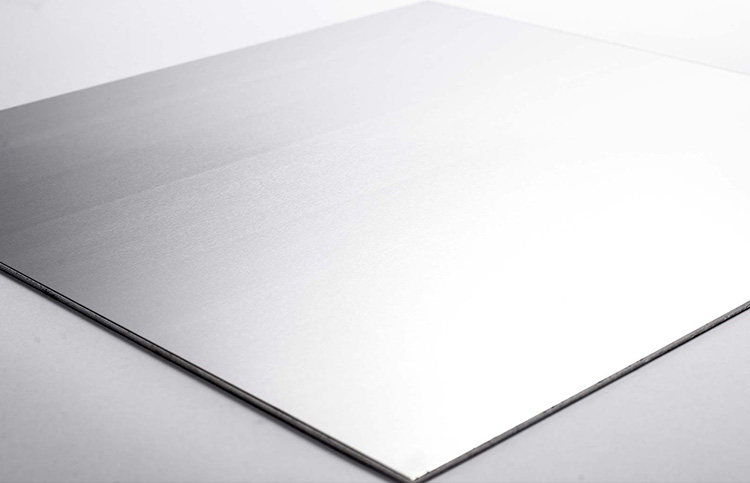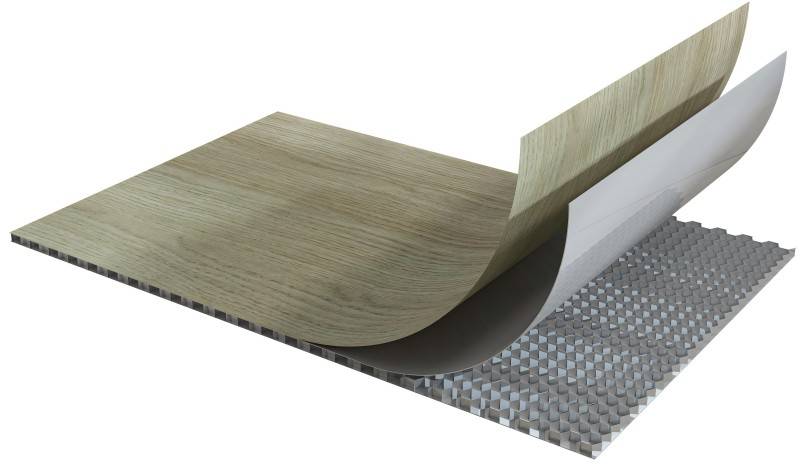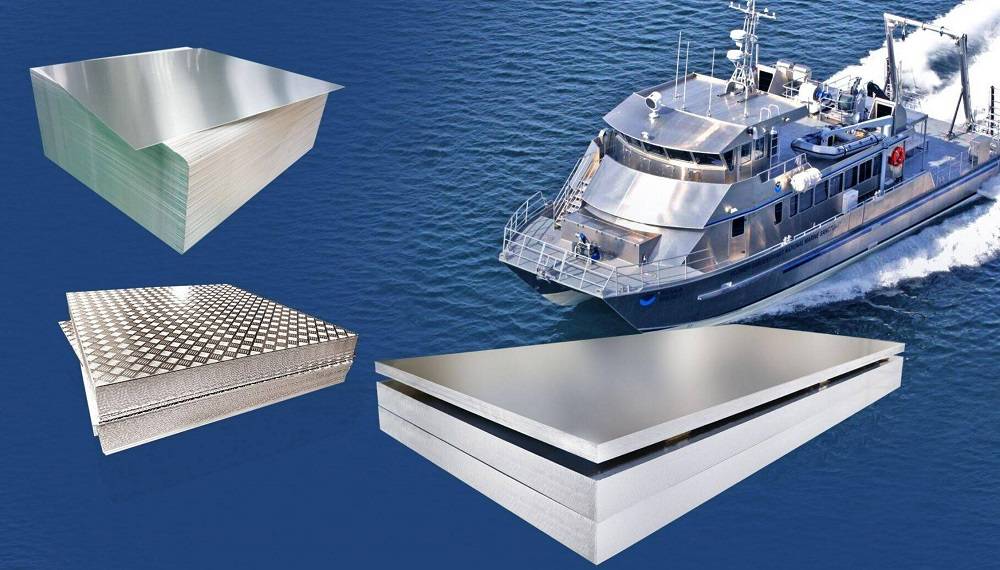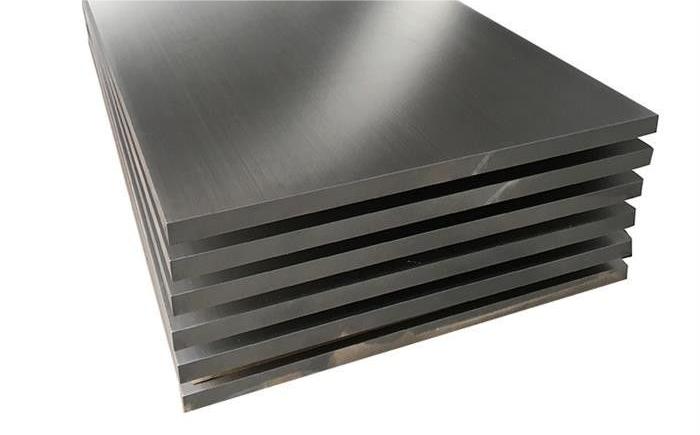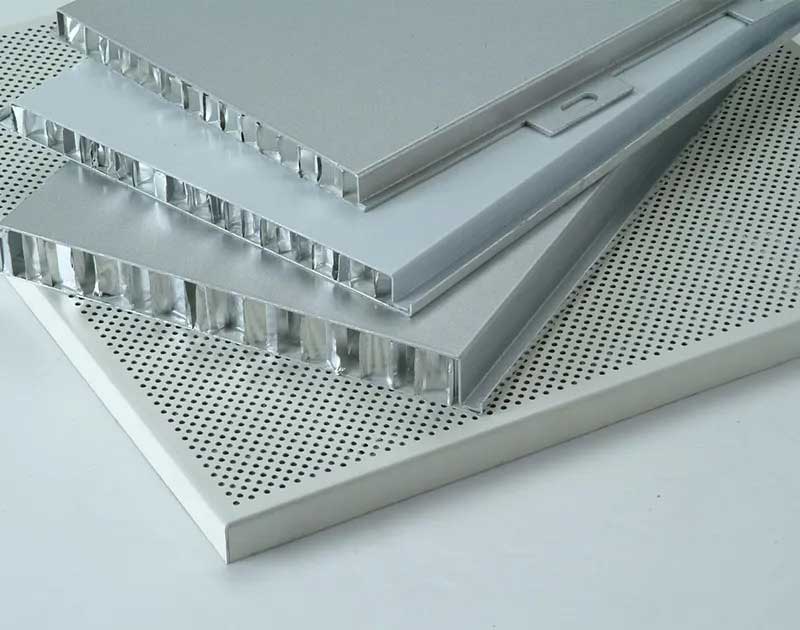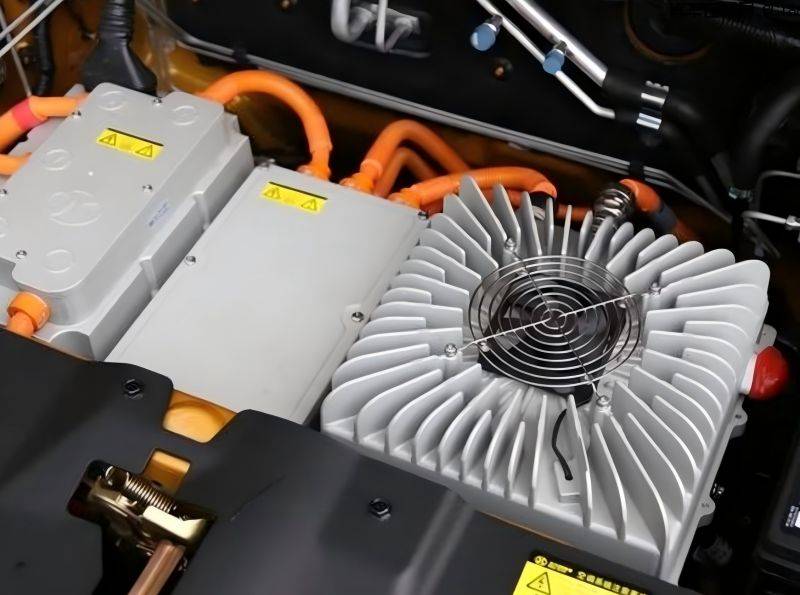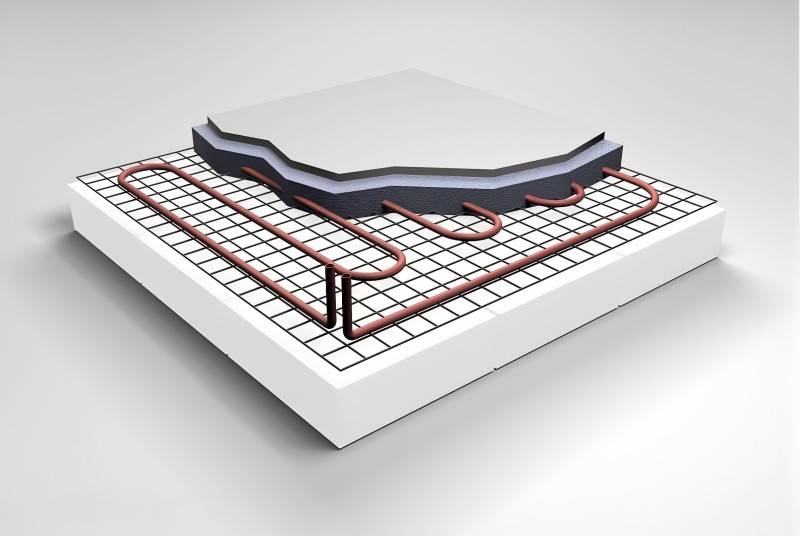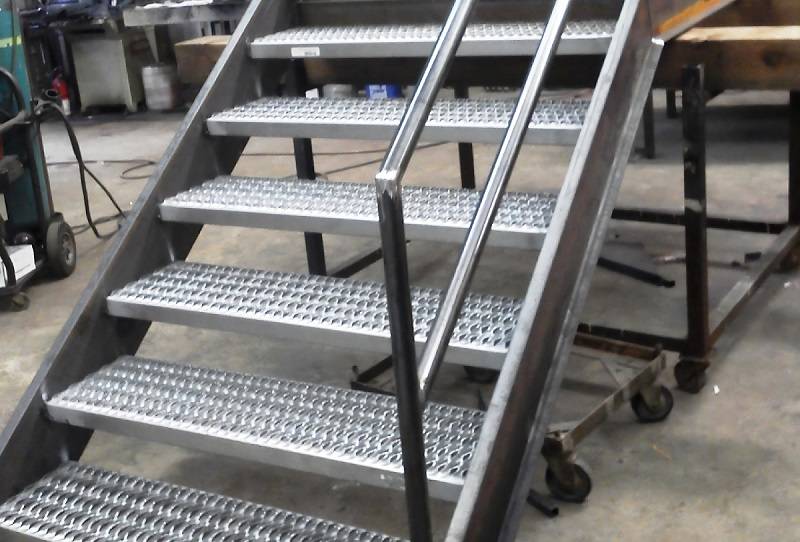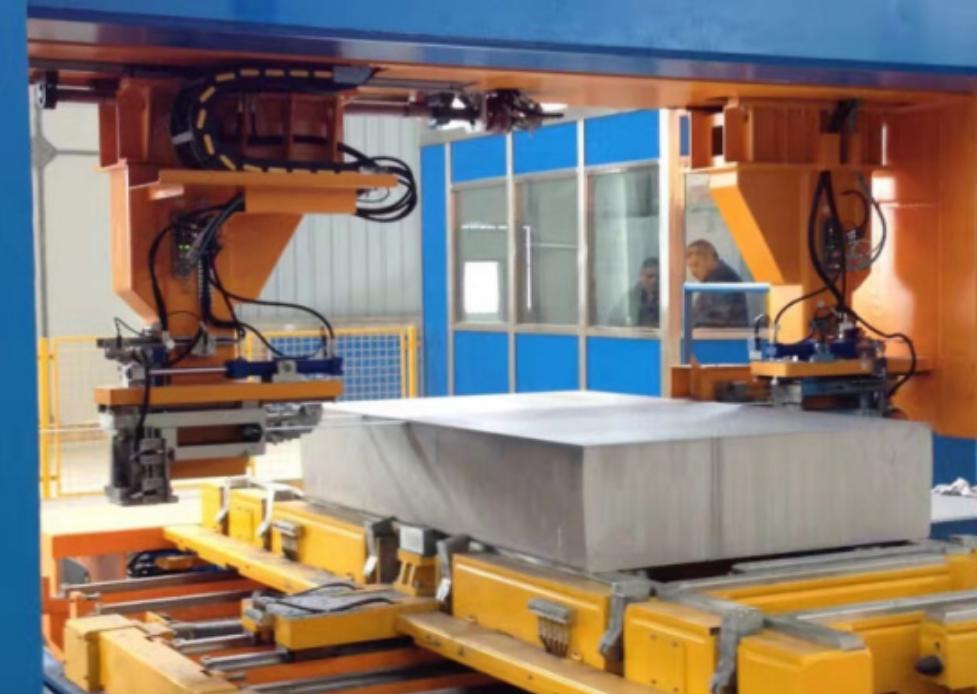Diamond-cut aluminum plates provide a cost-effective and attractive surface suitable for a variety of uses such as trailer trim and garage flooring to building materials and tools. Its raised diamond-patterned finish provides a look of grip, along with distinct appearance. But in an effort to keep the surface looking as long as possible, this article provides handy tips and advice to keep diamonds made of aluminum looking good as they should, be it cleaning them regularly off dirt or more difficult issues such as the process of oxidation.
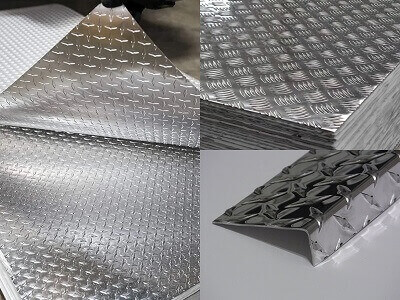
What Do Aluminum Diamond Plates Look Like?
Aluminum diamond plates now come with diamond-patterns to provide grip and appearance, plus reflectivity that enhances reflective properties to allow them to be utilized for decorative and functional use such as in flooring, walls or toolboxes.
Over time, surfaces become increasingly vulnerable to dirt and oxidation buildup that diminishes their shine and functionality in protecting against slipping. An understanding of the nature of each surface may be the key to proper cleaning and maintenance practices.
Recognizing its weaknesses like vulnerability to oxidation and scratches, users may use proper cleaning and maintenance practices to maintain it smooth and visually appealing.

What are the recommended methods for cleaning aluminum diamond plate?
There are various methods of cleaning aluminum diamond plate depending on the intensity of the dirt and grime accumulation. Regular maintenance avoids buildup of dirt while tougher methods can handle tough stains. Furthermore, the natural tendency of aluminum to corrode after some time also implies that specialist methods must be used in order to scrub away oxidation and give it a like-new finish.
Regular Maintenance for a Like-New Finish
For protecting your aluminum diamond plate from day-to-day wear and tear, integrate a basic cleaning routine into your daily or weekly routine. This way, you will be able to keep ahead of preventing the buildup of dirt, dust, and small spills, and keep the excellent diamond pattern in its very best and brightest looks.
| Step | Method | Materials | Frequency |
| 1 | Remove Loose Debris | Broom, vacuum cleaner with brush attachment | As needed |
| 2 | Wash with Mild Solution | Warm water, mild dish soap, soft cloth or sponge | Weekly or bi-weekly |
| 3 | Rinse Thoroughly | Clean water, hose or bucket | After washing |
| 4 | Dry the Surface | Clean, lint-free cloth | Immediately after rinsing |
In a garage setting, regular sweeping can prevent sawdust and debris from settling onto surfaces, while using mild soapy water solution and drying thoroughly afterwards will help avoid streaks while keeping surfaces looking their best.
Deep Cleaning: Tackle More Stubborn Stains and Residue
Over time, aluminum diamond plate can become stained by grease, oil or dried-on spills which require special attention in order to be safely and effectively removed without harming its finish.
| Stain Type | Cleaning Agent | Method | Precautions |
| Grease and Oil | Degreasing cleaner specifically for aluminum | Apply according to product instructions, gently scrub with a soft brush. | Ensure product is safe for aluminum; test in an inconspicuous area first. |
| Water Spots | Solution of white vinegar and water (1:10 ratio) | Apply with a soft cloth, wipe gently, rinse thoroughly. | Avoid prolonged contact; rinse completely. |
| Scuff Marks | Specialized aluminum cleaner or polish | Apply with a soft cloth, rub gently, buff as needed. | Test in an inconspicuous area first. |
Consider a workshop environment in which oil spills are frequent. Employing an aluminum-safe degreaser quickly can prevent permanent staining from setting in. Be sure to rinse after each application of any cleaning solution to ensure no residue remains behind.
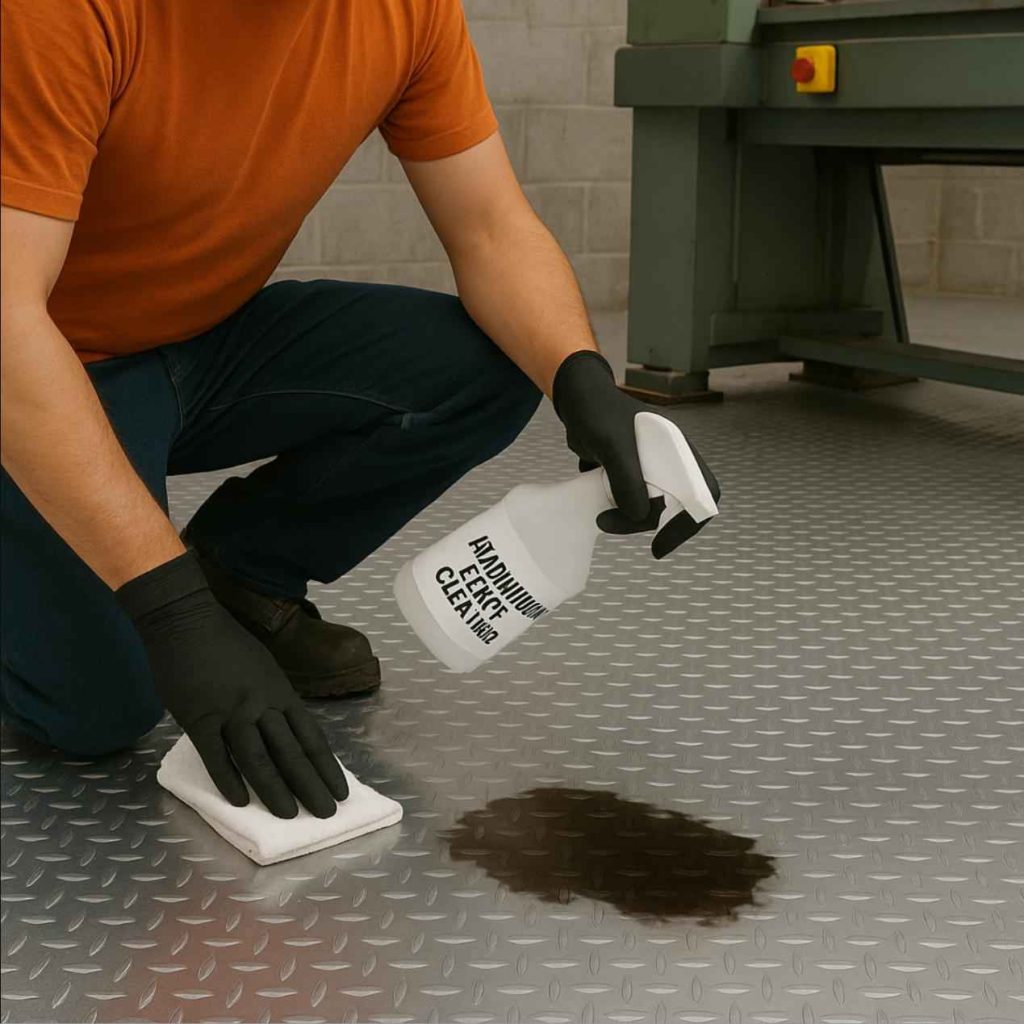
Removing Oxidation
Aluminum interacts with oxygen in the atmosphere to create aluminum oxide, protecting itself while simultaneously creating an unsightly dull white or chalky layer that reduces shine on diamond plate aluminum surfaces. Removing this oxidized surface requires specific products and methods.
| Step | Method | Materials | Precautions |
| 1 | Clean the Surface | Mild soap and water (as described in routine cleaning) | Ensure the surface is free of loose dirt before addressing oxidation. |
| 2 | Apply Aluminum Oxidation Remover/Restorer | Product specifically designed for aluminum oxidation | Follow the manufacturer’s instructions carefully. |
| 3 | Scrub Gently (if necessary) | Soft brush or non-abrasive pad | Avoid harsh scrubbing that can scratch the aluminum. |
| 4 | Rinse Thoroughly | Clean water | Ensure all traces of the cleaning product are removed. |
| 5 | Dry and Polish (optional) | Clean, dry cloth; aluminum polish | Applying polish after removing oxidation can enhance shine and provide protection. |
Diamond plate exposed to outdoor elements for extended periods may become covered in an oxidation layer. Utilizing an aluminum restorer according to product instructions can quickly remove this barrier layer and bring back a brighter finish.
Maintenance Tips of the Surface
Proper care and maintenance are key to keeping aluminum diamond plate looking its best over the long term; regular attention must be taken in order to minimize wear-and-tear as well as environmental impacts.
- Regular inspection
Regular inspection of aluminum diamond plate can help identify issues before they become major issues. Be on the lookout for dirt buildup, staining or the first signs of oxidation as taking immediate action is much simpler to solve these problems than leaving them until later. A quick visual check every day in high traffic areas should alert you of spills or debris which need cleaning up immediately.
- Protective Measures
Utilizing protective measures can lower deep cleaning needs while protecting surface finishes. In heavy traffic or spill-prone areas, mats or runners should be installed; rubber mats placed over diamond plate floors in trailers provide extra protection from scratches and dirt accumulation; heavy objects should avoid crossing this surface directly.
Aluminum is resilient but prone to being damaged by abrasive harsh materials like steel wool, scouring pads and harsh cleaners with abrasive compounds that leave unsightly scratches on its polished surface. In using soft cloths sponges or brushes rather than steel wool and harsh cleaners which can leave permanent scarring; tiny scratch marks will draw dirt over the long term making later maintenance even more challenging.
- Make decisions on environmental issues with regard to the environment.
Environment can have a huge influence on maintenance of aluminum diamond plate. Harsh weather, salt spray within coastal areas or industrial impurities may speed up oxidation and finish depletion; regular cleaning becomes especially vital in such cases as removal of such agents of damage is required to protect against further environmental damage; apply aluminum polish more often as an added measure of protection against environmental damage.
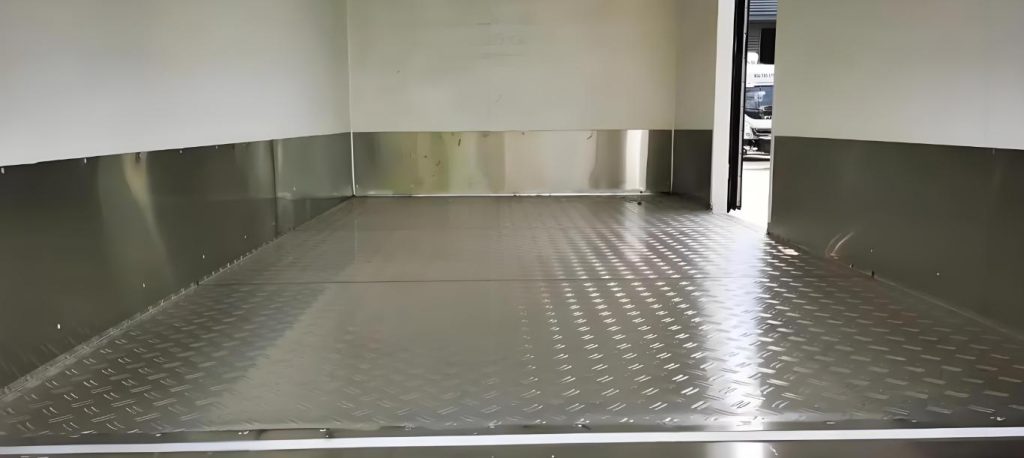
Precautions and Avoided Practices
In order to maintain the longest lifespan and finish of an aluminum diamond plate, you must know some precautions and practices that you should accomplish in taking care of it. It would spoil its finish if you do not treat it properly.
| What To Do | What NOT To Do |
| Use cleaning solutions that are mild and specifically designed for aluminum. | Use chemical cleaners that are harsh like strong acids or alkaline cleaners. |
| Use soft cleaning agents such as cloths, sponges, and soft-bristled brushes. | Use abrasives such as steel wool, scouring pads, or hard, abrasive brushes. |
| Wash the surface carefully with clean water after cleaning. | Allow liquids to remain on the surface for protracted periods of time, which can lead to water spots or staining. |
| Dry the surface completely with a clean, lint-free wipe. | Combine different cleaning products, as this will create hazardous fumes or harmful reactions. |
| Test any new polish or cleaning solution on a small, inconspicuous area first. | Apply too much pressure when polishing or cleaning; gentle action will usually suffice. |
| Wipe up spills and stains right away before they are more difficult to clean. | Scrub heavy or sharp objects hard across the aluminum diamond plate surface. |
| Consider applying a protective aluminum polish from time to time, especially in harsh conditions. | Assume all cleaners are aluminum-safe without checking the label. |
| Inspect the surface regularly for early appearance of dirt, stains, or oxidation. | Avoid regular cleaning so dirt and grime may accumulate. |
Maintaining the sparkling finish of aluminum diamond plates from being a chore is not necessarily hard. Cleaning and proper maintenance keep them sparkling and functional for decades to come, adopting the approach, advice, and safety measures of this guide can help ensure that their aluminum diamond plates look in its best condition and avoid doing it the wrong way.
If your aluminium diamond plates are beyond cleaning or have been irreparably damaged, do not hesitate to get in touch with us regarding replacement options.




